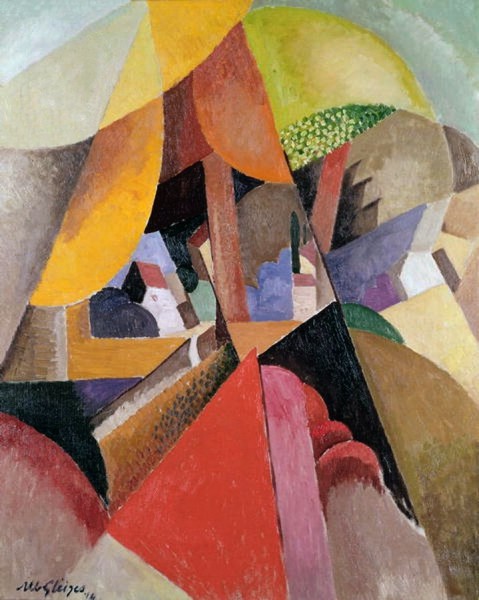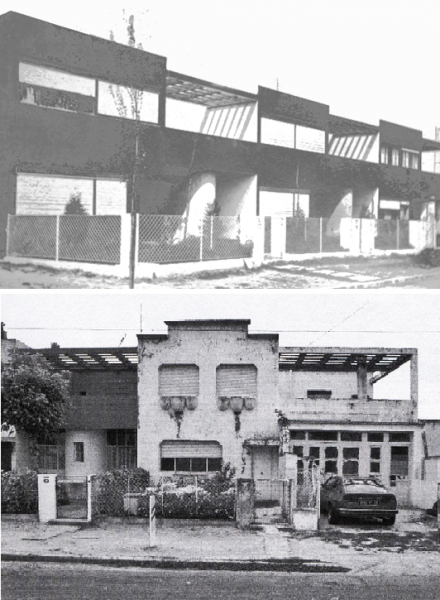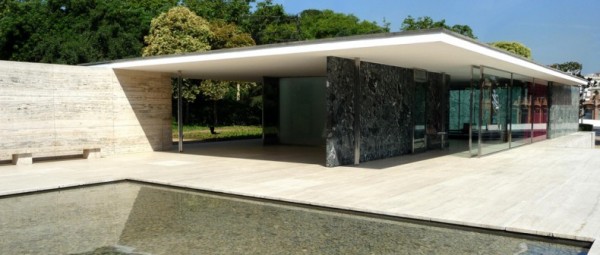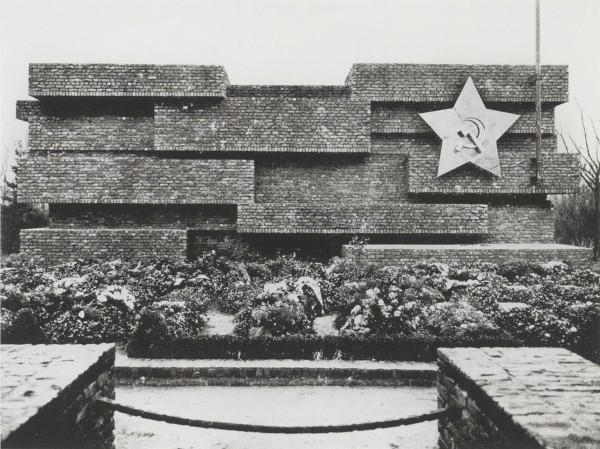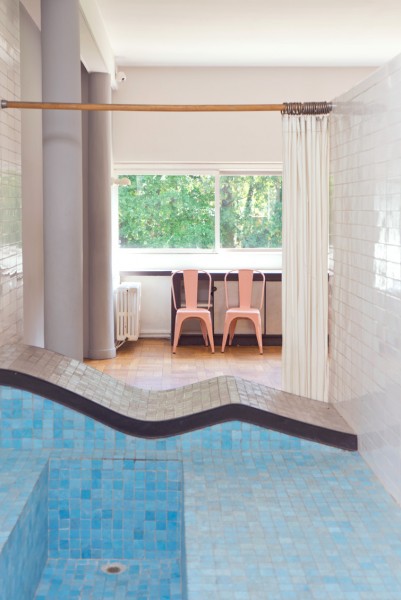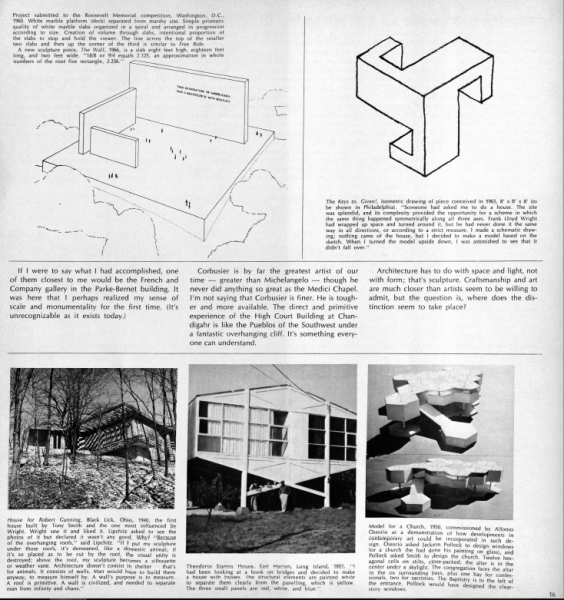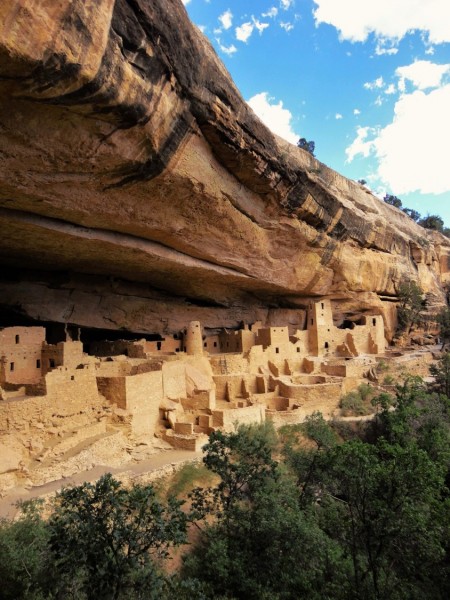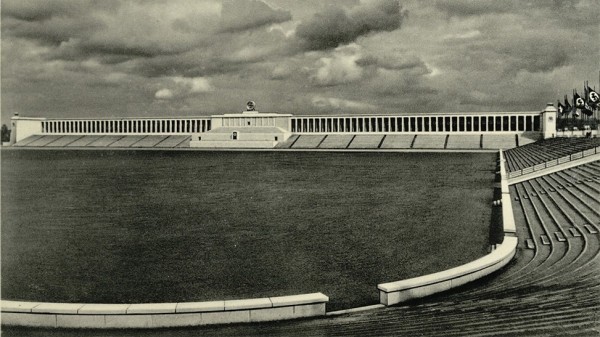Why Architecture Matters as Art as Never Before: Le Corbusier, Tony Smith and the Problem of Use
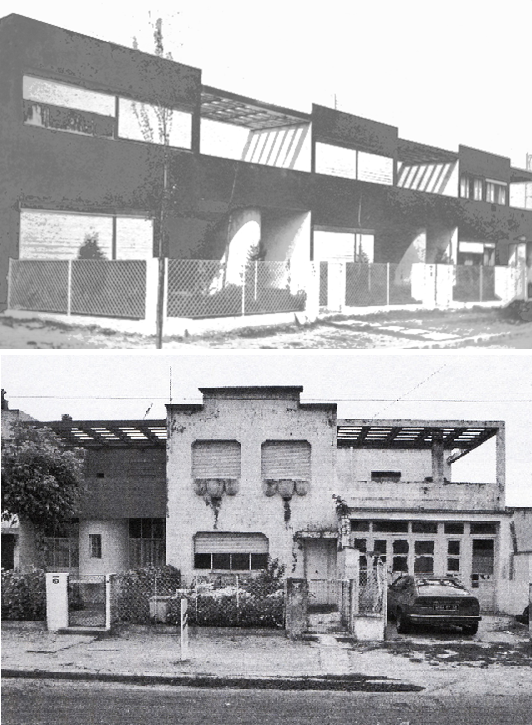
Intention is that which touches us at the depths of our heart, the quality of spirit brought to the realization of the work.
—Le Corbusier
There is a passage in Le Corbusier’s Toward an Architecture of 1923 where he describes how the stones at the Parthenon “were inert in the quarry…unformed” until the arrival of the “great sculptor” who took those stones and arranged “them in this way.”1 It was at that moment when inert matter became animate form that one could feel instantly the architect’s “unity of intention.” Even or especially if the architect had not altered the shape of the stones, it was felt as though every last element was animated by the builder, he refused “to allow anything at all which [was] not correct, authorized, intended, desired, thought-out.” 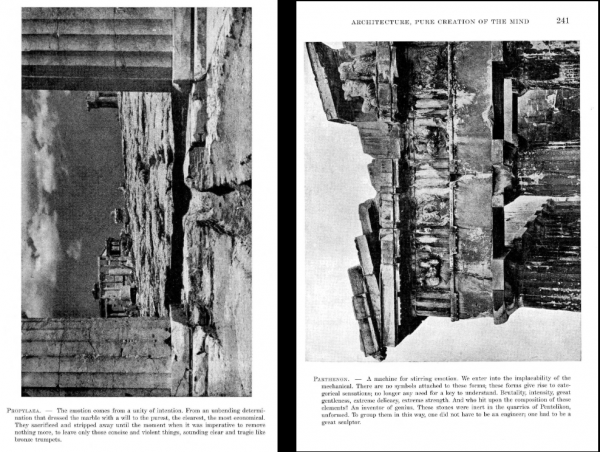
The architect, Le Corbusier writes, “swept up the desolate landscape and made it serve the composition. So from all along the horizon’s rim, the thought is one” (234). This discussion is directly followed by a set of comparisons between architecture and other arts, where, according to Le Corbusier, the question of intention never arises. Unity of intent is
generally accepted when it comes to painting and music, but architecture is reduced to its utilitarian causes: boudoirs, water closets, radiators, reinforced concrete, barrel vaults or pointed arches, etc. etc. These pertain to construction, which is not architecture. Architecture is when there is poetic emotion. Architecture is a plastic thing….It goes without saying that if the roof leaked, if the heating didn’t work, if the walls cracked, the joys of architecture would be greatly hindered, like a gentleman listening to a symphony while sitting on a pincushion or in a draft blowing through the door. (243-44)
Notice that Corbusier says the pleasures of architecture would be “hindered,” not vanish—the symphony goes on while the pins prick your skin—even if the walls are falling down, the roof is leaking, and the wind blows through the hall. Indeed, one could describe the fight of Corbusier’s career as the effort to dissociate architecture from its identification with function (often simply defined as engineering). If architecture is inert materials made animate by a “great intention” then functional design is defined by the “pure relationship of cause and effect.” Above all, the response to the two types of building—architecture and engineering—is categorically different. Before architecture one is “moved,” “rivet[ed] to the spot,” ones “eyes look at something that states a thought” (233). “With inert materials,” on the other hand, “based on a…utilitarian program” (233), the spectator’s mind wanders, aimlessly. As he put it a few years earlier, with utilitarian art the “spectator’s imagination…drifts”; it is “up to the spectator to make” the inert materials into a work.2
Le Corbusier is taking aim here at Gleizes and Metzinger’s argument in their widely circulated book Cubism of 1912 where they argued that the “mind of the spectator is the chosen place [for the] concrete birth [of form].” It is the “spectator,” they insisted, who will “establish unity himself.”3 Gleizes and Metzinger’s position has been recently taken up by Semir Zeki in Art and the Brain where he describes works of art as dependent on the “brain of the spectator” as their “chosen place of the birth,” each of those responses having “equal validity with the others.” Because there is no “true solution” to a painting Zeki writes, “One viewer…depending on his mood, may see in it a…moment of doubt; another may see in it a moment of satisfaction” and both have equal validity.4
My point is not to return to this earlier moment in the contest between art and objecthood, although it bears noting that the critique of literalism in “Art and Objecthood” is directly inspired by Clement Greenberg’s seminal account of Picasso and Braque’s collage,5 but rather to point to what I take to be the centrality of architecture for exemplifying the stakes of Fried’s argument fifty years later. The point of my title is to suggest ways in which architecture—in differing ways from photography, one the central concerns of Fried’s recent work but also nonsite since its inception (including my own work)—might say something essential about the ontology of art now.6 Rather than the index, which has haunted the intentional status of photography since its invention, and as Roland Barthes and many others have proposed, opens the photograph up to “the spectator to make” the work, it is to the users of a building over time that architecture has to contend. But unlike photography, that is not a potential threat that could be neutralized, it’s in the very nature of the medium; buildings are built for a purpose.
Le Corbusier felt this most famously and painfully at Pessac, the subject of Philippe Boudon’s extraordinary 1969 study Lived-in Architecture which aimed to “throw light on the…general phenomenon of the [real] conflict between the original intentions of the architect, as expressed in his buildings, and the reactions of the people who live in them.”7 Built as experimental housing for workers outside Bordeaux in 1926 Corbusier’s 51 structures were mostly unrecognizable within five years of being built. As the New York Times later described it, “Pessac is the model failure. Say Pessac now, and you have said everything there is to say about all that ever went wrong with modern architecture.” So even though “Pessac is alive and well today” that life represents an “entirely different kind of history than intended.”8
The standard intention v. reaction or response model should not exactly raise any theoretical problems: what one intends and what a receiver makes of a work is not something an architect or any artist has control over, much less say about. Then again, Le Corbusier’s frequently described artworks as machines to produce emotions: “The work of art is an artificial object which permits the creator to place the spectator in the state he wishes.” It was this attitude that in part accounts for Le Corbusier’s response to the changes made at Pessac. Here he is in 1931: “It is an absolute horror, a most unappealing kind of boorishness…I had thought that after all the sacrifices that Pessac has involved, one would at least have prevented the people from laying their disastrously incompetent hands on it.”9 The real problem here is not the gap between intent and reaction or response, but rather with the simple fact that whether or not a building is actually used in the way the architect wishes, it is always made for a user. One could of course build structures exclusively for friends or for oneself but that feels more like an exemplification of the problem than a solution to it. There is no real possibility of fictionally or on any other level of not acknowledging the beholder/user, they are present at the conception and the realization of the work. This is the logic behind Adolf Loos’ infamous declaration in 1910—the same moment as the Salon Cubists were making their claims about the spectator—that architecture is “not one of the arts.”10 Here is Loos on the difference between art and architecture: “A work of art is brought into the world without there being a need for it, a building meets a need. A work of art has no responsibility to anyone, a building to everyone” (82). This brings him to the seemingly inevitable conclusion that “Everything…that serves a practical purpose should be ejected from the realm of art” (83). Of course no modern architect believed Loos (likely not even Loos himself), but nearly every modern architect has felt the force of the claim. I would suggest, but cannot elaborate here, that the history of modern architecture can be defined by the effort to identify the precise moment when architecture stops and the space delivered up to the user starts.11
Loos famously offered two exceptions to his anti-art rule: the monument and the tomb were permissible instances of a building that could be understood as art. One could argue that Mies van der Rohe took these exceptions directly to heart with the Barcelona Pavilion of 1929, the building serving no purpose other than a ceremonial one. Or Mies’ 1926 memorial to the fallen Communist leaders Karl Liebknecht and Rosa Luxemburg, which functioned as monument, memorial, and evoked the image of the tomb. Nonetheless the Loosian prohibition on architecture—that anything that “serves a…purpose” should never be confused with art—puts distinct pressure on the desire, spelled out by Fried, to “negate,” “undo or neutralize [a work’s] objecthood in one way or another.”
Photographs, of course, can neutralize their indexical condition (one of the basic concerns of Why Photography Matters as Art as Never Before), while architecture cannot cogently negate its functional condition without ceasing to be what it is.12 I would offer, in passing, the fact that Le Corbusier tried to make the bathroom at Villa Savoye, the ur-functional space, into a work of art—and more explicitly a work of art than any other aspect of the building—suggests the nature of the problem modern architects faced, and pointed to a kind of limit case of Le Corbusier’s commitment to “go beyond” utility.
Moreover, the architectural problem of function sets the terms and much of the language for the photographic problem of thinking through the index. One canonical approach to the problem of the index could be described as the appeal to the plan. Thus it was that Le Corbusier described how a house is “determined partly by the utilitarian givens of the problem.” Only partly because “Already in his plan, and consequently in everything that rises in the space, the architect has been a plastic artist; he has disciplined utilitarian demands in virtue of a plastic goal that he pursued; he has made a composition” (246). The plan, Le Corbusier explained early on, is “completely set in the mind; in which case technical realization is merely the rigorous materialization of the conception, almost a matter of fabrication.” I would suggest that the conceptual ideal of the plan is the rhetorical model for photographic notions of visualization or previsualization which was a dominant photographic discourse between 1920 and 1960.13 As one photographer put it in 1920 (but speaking for a generation), “the plan always precedes invention…the plan will be there to give unity and coherence to the final picture. Without such prevision, the making of successful pictures will be confined” to accident. Despite the fact that architectural planning becomes the model for thinking through photography, taken literally, a plan in architecture makes more sense than previsualization in photography. I would add that Boudon’s second formulation of the problem of intentionality at Pessac he describes as the “discrepancy between Le Corbusier’s intentions and his finished works,” or between what he “said and what he did.” The latter formulation gets closer to the problem of the plan, where the difference between something like a fully mental plan and its material execution is addressed, even if here too there is no distinct theoretical problem raised by the idea that an architect’s verbal discourse is not identical with his practice. To see Le Corbusier’s discursive practice as exemplary of his intent would be to take his discourse more seriously than the architect did.
Without dwelling further on these issues I want to touch on a figure who looms centrally in Fried’s account of “Art and Objecthood,” Tony Smith, an architect who worked for a few years under Frank Lloyd Wright and went on to practice architecture before turning to minimal sculpture. It was Smith who drew the direct analogy between Le Corbusier’s late work and his experience on the unfinished New Jersey turnpike. What is crucial for my argument, and what has not been substantially addressed in the literature, is that Smith’s minimalist models are all drawn from architecture. Architecture was irremediably literal for Smith, that was its defining significance.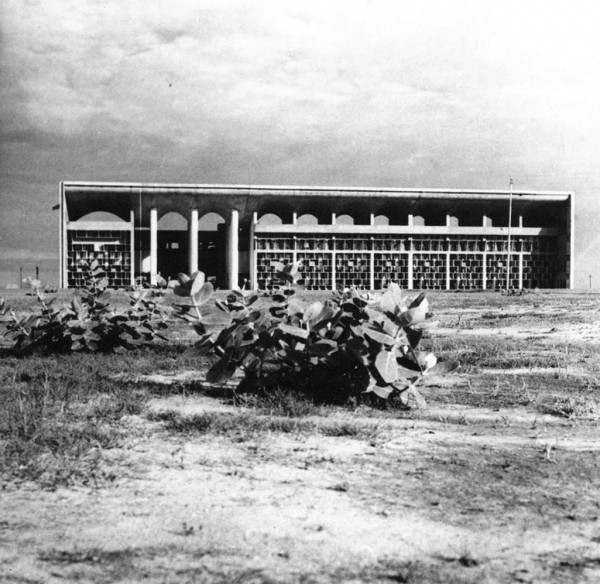
Smith described Le Corbusier as “by far the greatest artist of our time.”14 Le Corbusier, he says, is “tougher and more available” than Michelangelo; Corbusier’s High Court Building at Chandigarh (a work which Smith saw in photographs) provides the kind of “direct and primitive experience” he longed for, and that artworks typically could not supply.15 He associated the High Court with an early memory of the Pueblos of the Southwest “under a fantastic overhanging cliff.” The High Court Building, like the Pueblos, and like Stonehenge and New Grange in Ireland and unlike any other artworks, is “something everyone can understand” (380). The problem with most art was that it was too limited, it was like a “postage stamp” sending a “message to one person” rather than “send[ing] a message to all the world. To all the people who ever lived.”16 In Le Corbusier, Smith saw one of the few living examples of the “archaic or prehistoric look” he admired in Michelangelo. This is what James Stirling meant when he said, in an influential essay on late Corbusier, that “Today Stonehenge is more significant than the architecture of Sir Christopher Wren.”
Smith reflects how as a “child of four” he visited the Pueblos in New Mexico, an encounter which provokes seemingly endless layers of associations up to and including Le Corbusier’s buildings at Chandigarh. The Pueblos by virtue of their status as distant memory, “continues to nourish me time and time again.” The Pueblos, he says, are a “continuing reference, even though they were never in my consciousness except as that” (385). The mystery of the pueblos—their modular repetition, their asymmetry, their horizontal linear extension, their monumentality, their sense of open-ended continuity—gives him access to Wright, to Le Corbusier, and to the unfinished New Jersey turnpike. It is their capacity to generate associations that make them more “real” than the “buildings of our own society” (385). This is Smith’s modeling of the minimalist situation. An encounter with a vast and numinous structure lodges in one’s memory and the mind weaves endless associations around it, returning to it over and over again building new layers of memory.
Of course what ties together Smith’s architectural models—the Pueblos, Stonehenge, Albert Speer’s drill grounds at Nuremberg, the unfinished turnpike, modular factories, Frank Lloyd Wright’s Honeycomb House, Le Corbusier at Chandigarh—is an architectural space that spills over into its natural setting. This sense of the structure’s extension into the setting was replicated at the level of form as the modular structure of the work was thought to embody the cellular structure of the natural world.17 The endlessness of the non-bilateral modular structure was a formal analog of the endlessness of experience provoked by those very things. For Smith the formal implication of endlessness is the way the work of art embodies its ontological openness to the endlessness of the beholder’s experience. Smith’s taste for a form of architecture that implies an ongoing self-replicating horizontal unification of the work and world is therefore a consequence of his idea of the ontology of the work of art.
Notes


